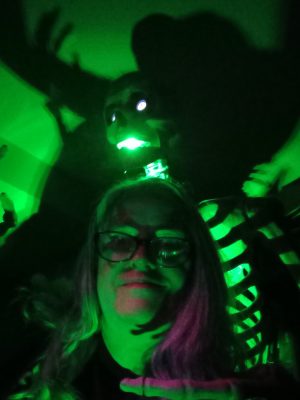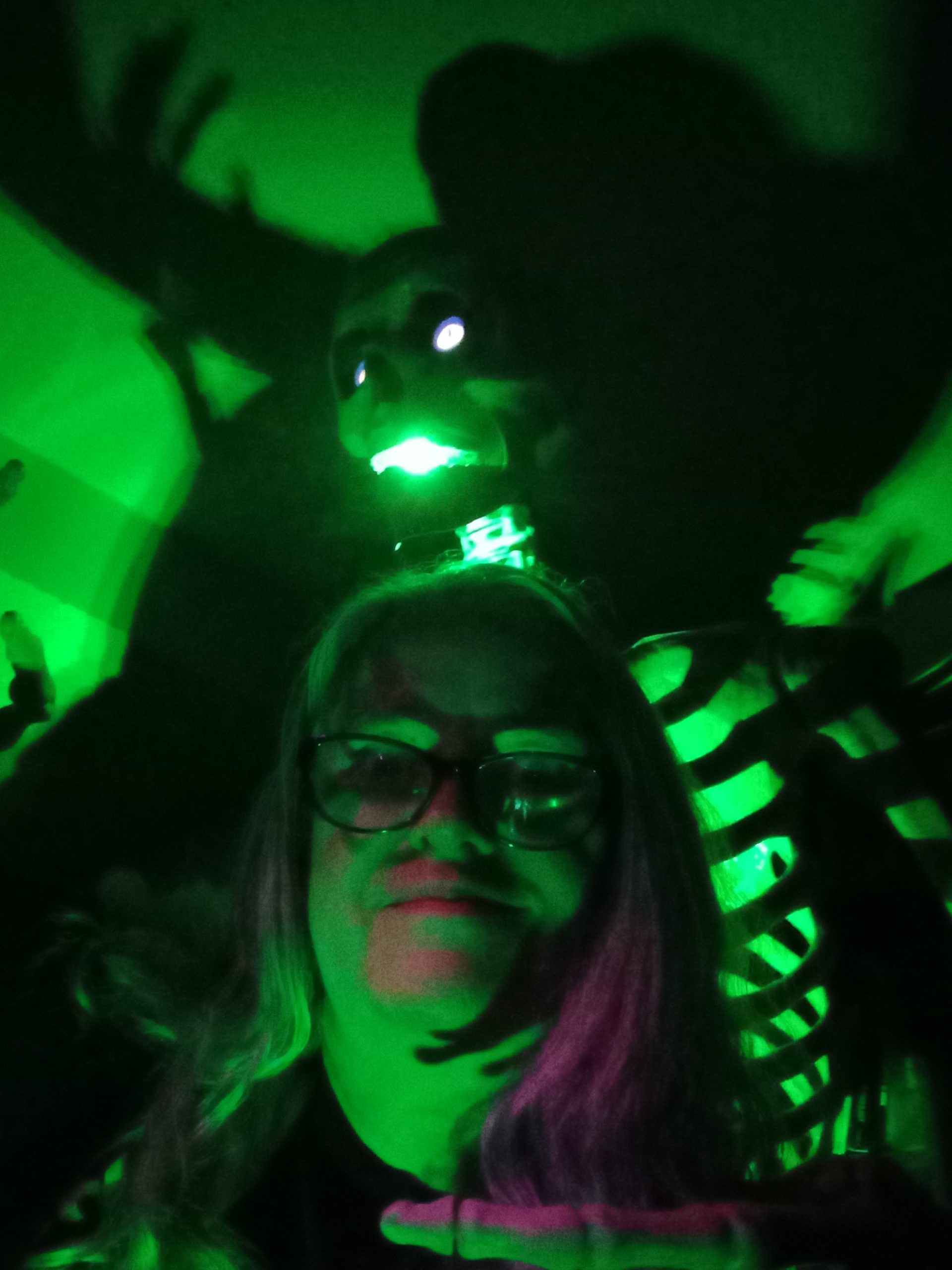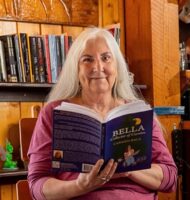Halloween Haunts: Have a Bluetooth Halloween
By Lisa Morton
Bluetooth.
Who could’ve predicted ten years ago that Bluetooth technology would be one of the major future advances in the art of the Halloween haunt? But it’s happened, and it’s fantastic.
Bluetooth, that nearly-magical energy that allows us to connect our phones to other devices, first entered the Halloween haunt arena a few years ago by allowing haunters to use Bluetooth speakers throughout their mazes. The speakers, which are surprisingly powerful but may be no bigger than a hockey puck or a box of crackers, are controlled by phone apps, are easy to use, and pack a punch when artfully hidden in a Halloween yard. For years, sound effects and music in yard haunts were confined to either speakers blasting through windows from the front of the house or involved the use of lots of clumsy cords.
Halloween haunt arena a few years ago by allowing haunters to use Bluetooth speakers throughout their mazes. The speakers, which are surprisingly powerful but may be no bigger than a hockey puck or a box of crackers, are controlled by phone apps, are easy to use, and pack a punch when artfully hidden in a Halloween yard. For years, sound effects and music in yard haunts were confined to either speakers blasting through windows from the front of the house or involved the use of lots of clumsy cords.
Speakers may be used either to provide atmospheric sound by themselves (i.e., a soundtrack of howling winds, playing from your phone or laptop and looping forever to pour out of the speaker), or they may be paired with a projected image. These projections, known in the trade as “digital decorations,” are one of my personal favorite ways to spice up a yard haunt: a small, cheap projector can be easily hidden behind a headstone, a plant, a rock, a pile of skulls, whatever, and can create the illusion of moving figures on a wall, a screen, or even a 3D form created specifically to pair with a digital decoration. Companies like AtmosFX have capitalized on Bluetooth technology to market their own Bluetooth-enabled projectors that can be paired with their Bluetooth speakers (these speakers carry a whopping 12-hour charge!). Speakers can also be linked to provide full stereo sound.
This year, though, Bluetooth took Halloween haunts to the next level with the introduction of the first programmable audioanimatronic figure. If you’re anything like me, you love all the cool full-sized moving and talking figures that come out every Halloween season, ranging from recreations of your favorite movie monsters and slashers to fully original creations…but where these figures have often lacked for me was in the sound department. Case in point: we purchased a fabulous and very creepy caretaker figure for our cemetery display a few years ago that we loved. This guy was dressed like a failed Victorian dandy, had a marvelously creepy face with glowing eyes, lifelike movements…and a voice that sounded like a supporting player from a Western, with a thick drawl. It didn’t match at all (amusingly, that same actor seemed to voice nearly every freaking figure for a while!), and there was no way to change it. Believe me, I tried. I went into haunt group discussions to find out if anyone had figured out how to hack the sound chip, but the only solutions offered (I wasn’t the only one irritated by these voices) was to turn the figure’s sound completely off and hide your own Bluetooth speaker inside or near the figure.
For years I’ve wondered why no one manufactured a figure with a removable sound card. How hard could it be?
Well, apparently it really took the arrival of Bluetooth to change all that, as Home Depot demonstrated with this year’s “Ultra Skelly.” Playing on the immensely popular “12-Foot Skelly” they introduced in 2020, Ultra Skelly is a smaller cousin, measuring a mere 6.5 feet in height, but is Bluetooth-enabled to allow the user to provide their own programming, including sound, lights, and movement. It’s all accomplished via a phone app that includes incredible voice-changing abilities, allowing anyone to record dialogue with low pitch, high pitch, echoes, or alien and robot effects. The voice recording is sent via Bluetooth and the skelly’s programming somehow perfectly matches the words to the jaw movements.
Yes, I’ve spent far too much time playing with my Ultra Skelly already.
But here’s part of the reason why: with the ability to add my own dialogue to this thing (they say it can record up to ten 30-second audio tracks, although I haven’t fully tested that yet), I can see a lot of storytelling possibilities here. Beyond just writing dialogue for our yard haunt (we’ll be positioning Ultra Skelly near the front so he can introduce guests to the “Septo Cemetery”, and yes – he has a motion sensor so he only spouts off when someone comes near), I’ve considered crafting a series of short Instagram/TikTok/Facebook videos of Ultra Skelly telling short-short stories. I recently recorded a tribute video for a friend who is receiving an award using myself with Ultra Skelly. The creative potential here seems limitless and not bound to a single holiday.
Look, it’s not as if I’m going to abandon other forms of writing…but I love the idea of a unique storyteller to deliver my words. It’s entirely possible that if you come to my house in December or May or August, Ultra Skelly will still be in my living room.
Heck, it may even greet you by name.
Lisa Morton is both an award-winning fiction writer and one of the world’s leading experts on Halloween and the paranormal. Her media appearances include Shock Docs: This is Halloween (The Travel Channel), The Real History of Halloween (The History Channel), Demon in the White House (Discovery +), CNN’s Margins of Error, NPR’s Throughline, Paul Giamatti’s Chinwag, the radio show Coast to Coast, the Blu Ray supplements for Trick ‘R Treat, and dozens more. Her books include Trick or Treat: A History of Halloween, Calling the Spirits: A History of Seances, The Art of the Zombie Movie, The Samhanach and Other Halloween Treats, and the novella Placerita (co-authored with John Palisano). She lives in Los Angeles and can be found online at lisamorton.com.



